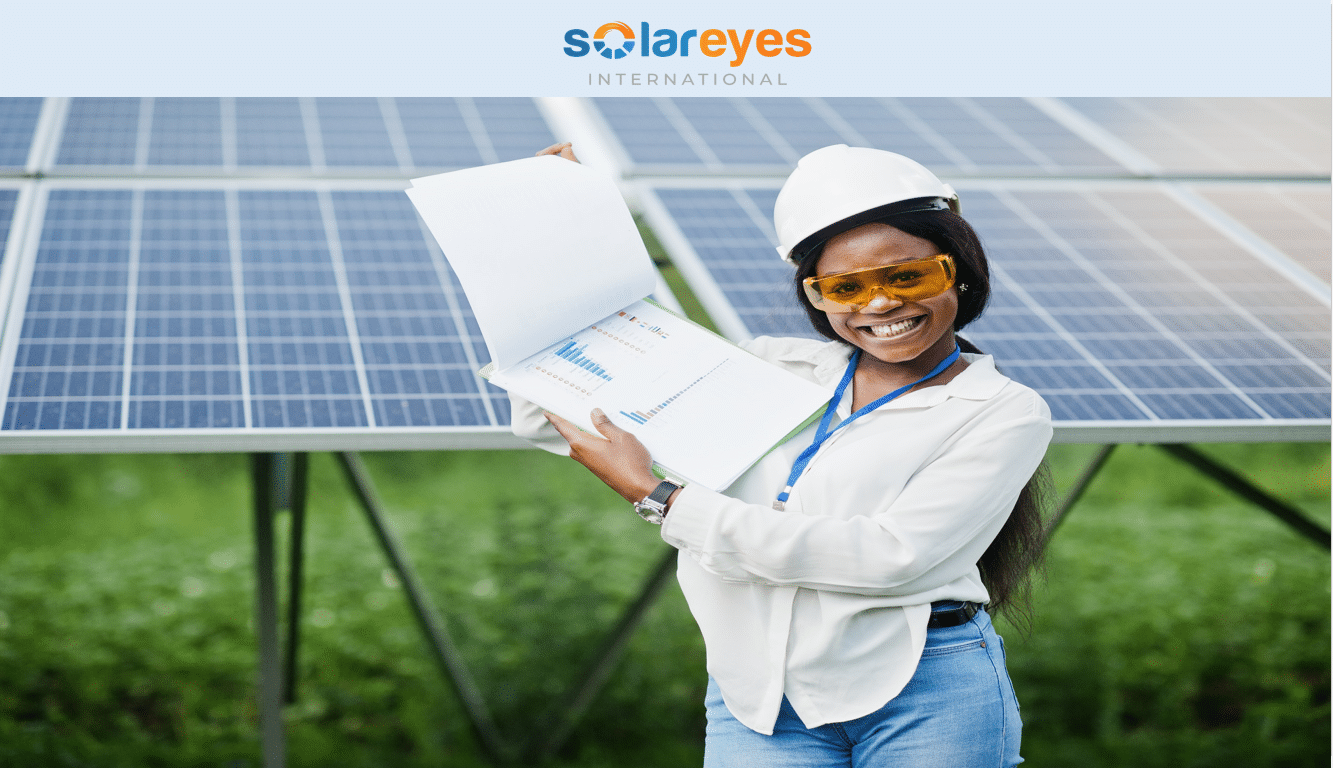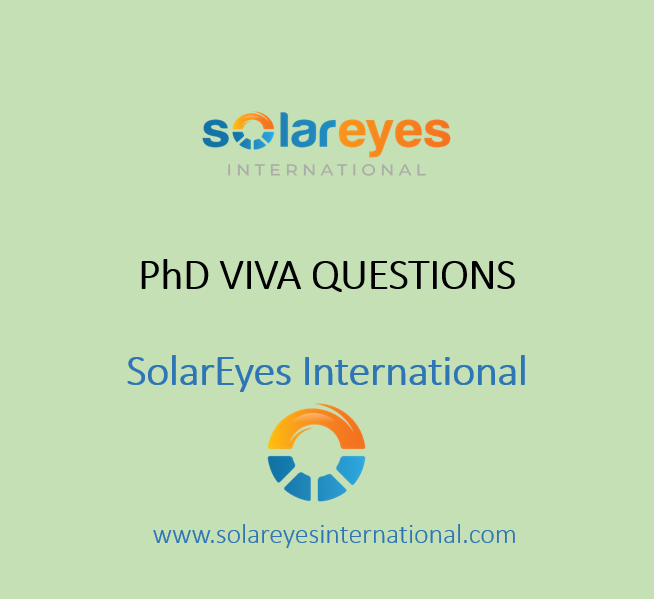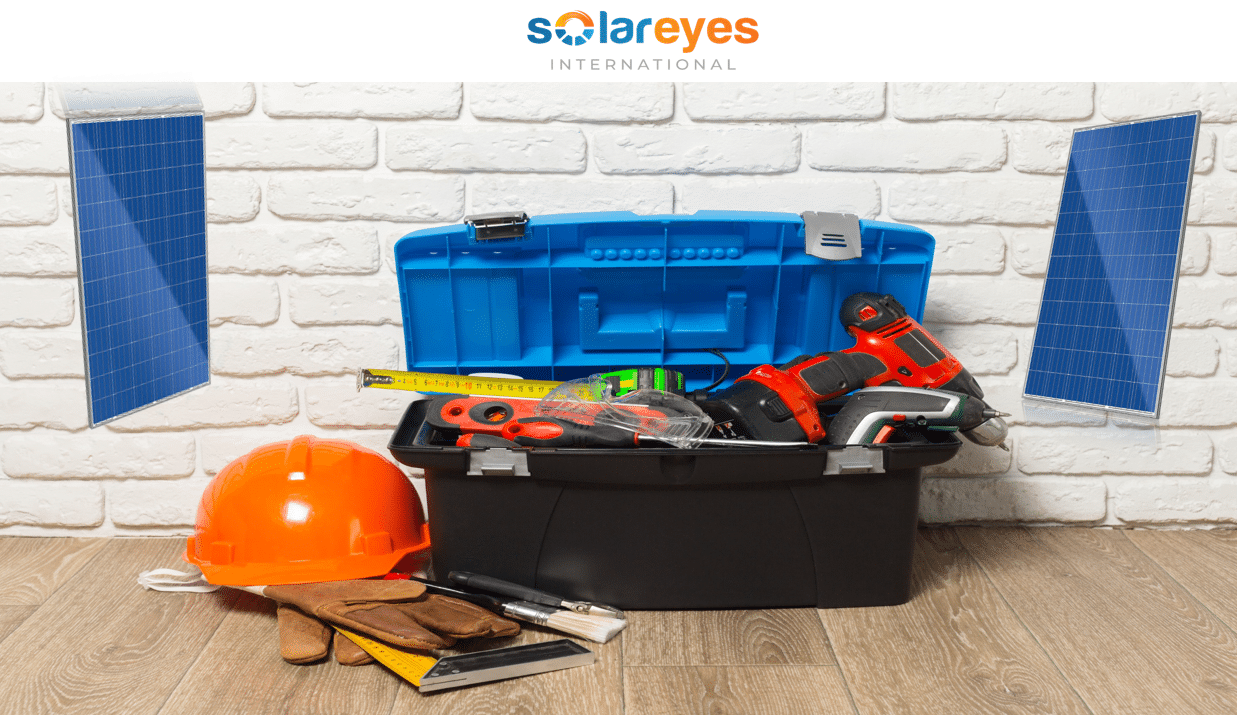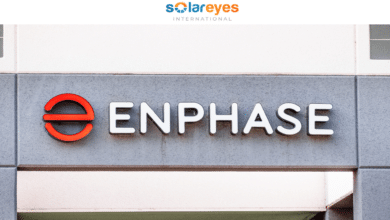SOLAR PV MODULE MANUFACTURING PROCESS EXPLAINED – from solar cells to solar panel
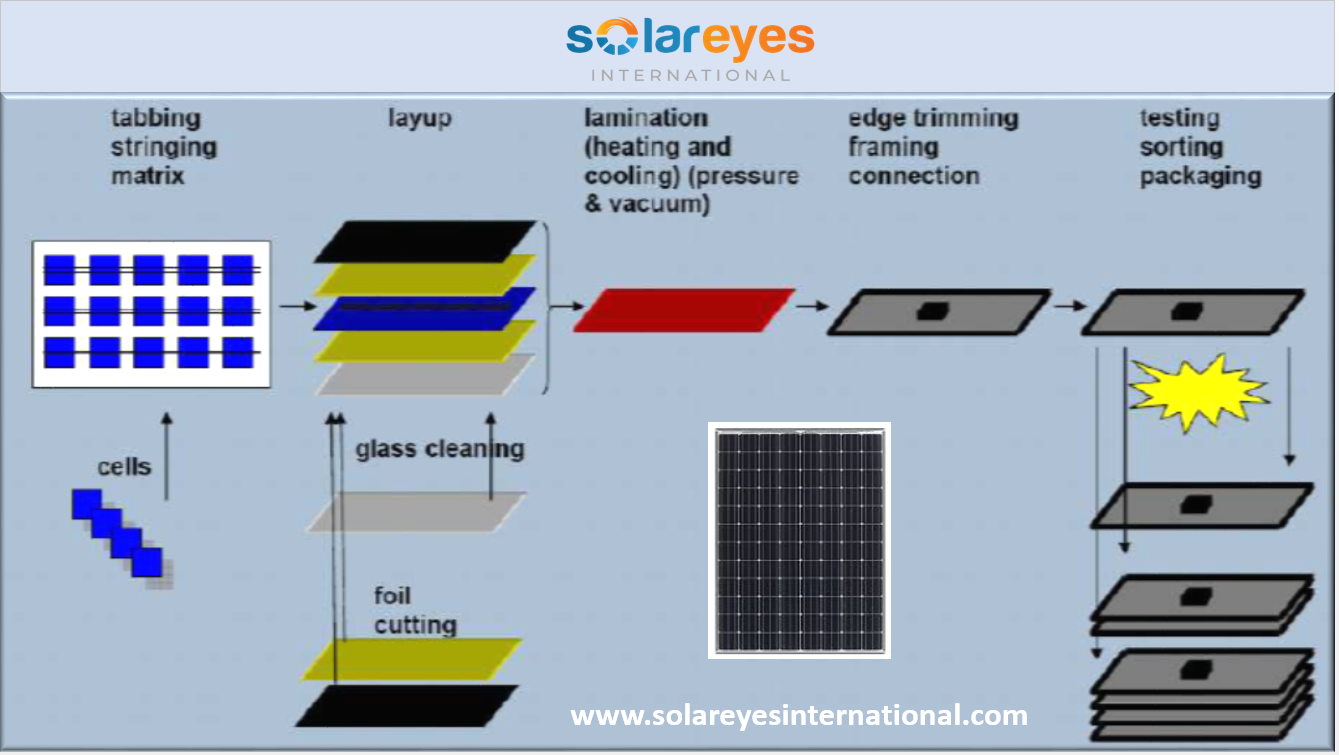
Background on Solar PV Sector
Solar energy has gained much attention over the past decade. The attention has grown exponentially such that we are now living in the exciting times of the solar photovoltaic (PV) sector.
Rapidly falling PV system prices, ever increasing electricity and conventional fossils prices, and the furious pace of PV production capacity addition happening worldwide and ambitious global missions, have set the stage for an exponential growth of the solar PV industry.
Solar PV manufacturing is a very dynamic sector that has seen long term growth amidst lots of demand shortages as well as excess production capacities.
*** ALSO CHECK: ABBREVIATIONS IN THE SOLAR ENERGY SECTOR
Solar photovoltaics have been around for a long time, but its adoption as a major energy source started only about 10 years back.
Drivers for Accelerated Investments in the Solar PV Manufacturing Ecosystem
The following are drivers for accelerated investments in the solar PV manufacturing ecosystem.
- Increasing demand for energy and specifically solar power
- Innovation and manufacturing leadership
- Domestic content requirements
- Requirement of technology tailored to local conditions
- Priority sector lending
- Avoiding the volatility of foreign currency borrowing
- Need for employment creation
Solar PV Module Manufacturing Process Explained
The Crystalline solar PV module is produced when a group of solar cells is interconnected and assembled.
HOW TO SIZE A SOLAR SYSTEM – 5 clear steps anyone can follow
The detailed schematic representation of the solar PV manufacturing stages is given in Figure 1 below. The process starts from cell sorting and/or cutting up to packing when the product is ready.

Figure 2 below shows the diagrammatic representation of different stages in solar module manufacturing process. In short it gives a visual cu through of the processes involved in order to come up with a solar PV panel.
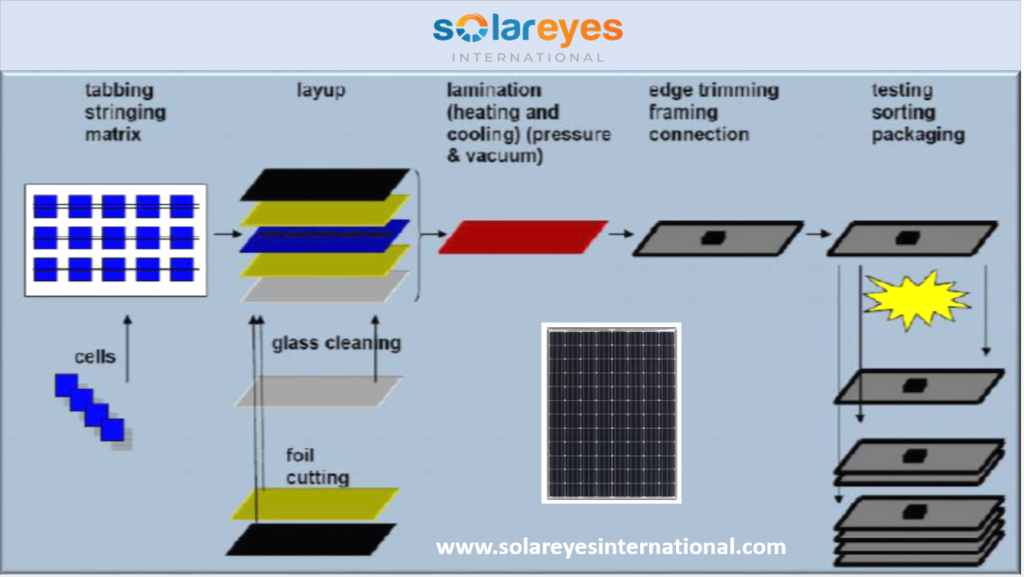
Required Machinery for Solar PV Module Manufacturing
To carry out the manufacturing process there are machines required. Below are the list of the machines required and descriptions for their functions.
However in modern solar PV manufacturing plant/laboratories all or a number of the listed machines will be bought or installed as one big multipurpose machine. The machines required include:
1. Cell tester
Solar Cell Tester is applied to the primary process of solar panel manufacturing, testing parameters like electrical testing and quality testing.
Check here on How to Ensure Your Solar Panels Last Longer: A Comprehensive Guide.
Electrical testing test the electrical performance of photovoltaic cells under a solar simulator while quality testing involves testing for surface quality, breakages and cracks to make sure the cell meet the required standards.
A computer with user-friendly software caters for different options, such as defining the parameters to be measured.
This stage can also involve cell sorting and cell cutting to make sure the cells have similar current, voltage parameters and dimensions.
2. Laser scriber
This is used for scribing or cutting the solar cells and silicon wafers in solar PV industry, including the mono crystalline silicon and poly crystalline silicon solar cells and silicon wafer.
3. Ribbon cutter
A ribbon cutter is used to cut the ribbon as per dimensions. Can be done manually or use already custom made ribbons.
4. Soldering station
A soldering station is used to solder the cell by using ribbon in a single cell and the process is called tabbing. Soldering the tabbed cell is called stringing.
5. Solar tabber and stringer machine
The solar tabber and stringer machine is a fully automatic machine for soldering photovoltaic solar cells. In the tabbing process, with the help of the soldering stations, two copper strips are soldered on to the two terminals of the cells.
One is the negative terminal and the other is the positive terminal. It is these terminals which are later connected to draw current generated by the modules.
For the stringing process, tabbed cells are connected in series or parallel connection with the help of soldering stations to get the required current and voltage.
Normally the cells are connected in series. The tabber and stringer machine is used for assembling and soldering of strings of cells interconnected with metal ribbons using the tabber & stringer.
6. Glass washer
This washes, rinses and dries the glass superstrate using a glass washer. It removes unwanted particles from glass and allows it to dry very fast.
7. Layup station
Tempered glass, ethylene vinyl acetate (EVA), Solar cell string and back sheet layer materials are placed together on this station. EVA is transparent in nature and is mainly used to protect the cells from direct exposure to dust and moisture.
On top of the EVA, either toughened glass or crane glass is put. On the back side a layer of TEDLAR is put whose main function is to protect the cells from any kind of exposure or scratches.
Three/ Four terminals coming out from the cell connection are taken out from the TEDLAR to provide connection.
SOLAR PANEL LOSSES: All you Need to Know + Tips on how to avoid them
The module lamination circuit is completed by soldering bus ribbons to connect the strings together and providing output leads at the bussing station.
8. Electroluminescence tester (EL tester)
This machine detects the micro cracks in the prepared solar module. This device can recognize in real time cell breakage, surface cracks and fissures of a few tenths of a millimetre.
9. Mirror observation machine
Mirror observation method is use to observe solar module clearly, to check the foreign particles in the module and strings alignment
10. Laminator
In the manufacturing line for PV modules, the laminator machine is of fundamental importance in curing the ethylene vinyl acetate (EVA), to join the layers that form the module and remove all air from between them.
When the materials in the photovoltaic module have been placed on the glass, they undergo a heat treatment that converts the EVA into a type of gel that encapsulates all the layers to form a very strong and compact sandwich.
SOLAR PANEL LOSSES: All you Need to Know + Tips on how to avoid them
The result is a high quality product ready for the finishing phase before testing and installation. To make the service even faster and more complete, accessory units are available for the semi-automatic preparation of the glass, the sheets of EVA and the back sheet
11. Sun simulator
This equipment is used in the final test of solar module manufacturing. It measures solar module output power and physical parameter by simulating sunlight, and classifies them according to the results of measurement.
It is at this stage where I-V characteristics of module are tested. The test result can be saved and labelled on the solar module.
12. Solar panel framing machine
For completing final assembly, which includes edge trimming at the Trimming station, installing edge gasket and frame with the Frame Assembly and attaching a junction box at the junction box station.
The main function of the junction box is that from this point only the main connection to the supply point is taken. This stage involves mechanical testing. It is from this stage that a complete solar panel is obtained.
At this stage, waste is generated mainly aluminium chips. Aluminum chips generated from the cutting of Aluminum section are sent to local Aluminium fabricators to recycle the same and return to the solar module manufacturing plant.
13. Solar Panel Testing
Once the whole module assembly is ready for dispatch, then again a testing is done to check the I-V characteristics of the module.
As per the I-V characteristics, the modules are separated into different categories and accordingly the final label is also put which mentions the different electrical parameters of the module like maximum peak power, maximum current, maximum voltage etc.
Moreover the testing is done to check that module falls within the maximum and minimum level as per the standards. The modules which are out of range are labelled as rejected modules and are not sold into the market. To reduce costs it is necessary to make sure number of rejects is minimised.
10 Ways of Financing your Solar System
This can be done by thoroughly supervising every process and making sure each and every process is done to standards.
Output solar panel sample Figure 3 below shows a sample solar panel. Depending on the type of solar cells used, different solar panels (mono or poly crystalline) can be made.

Conclusion
Overall, the manufacturing process for solar PV modules requires precision, attention to detail, and advanced technology. The end result is a reliable, sustainable, and renewable energy source that can help to reduce our reliance on fossil fuels and mitigate the effects of climate change.
FOLLOW US
Follow us on LINKEDIN, FACEBOOK, TELEGRAM GROUP and WHATSAPP.
*** ALSO CHECK: 12 CHALLENGES FACED BY SOLAR COMPANIES IN DEVELOPING COUNTRIES
HOW TO SIZE A SOLAR SYSTEM – 5 clear steps anyone can follow
HOW TO START A SOLAR COMPANY – do these 6 things and make money through solar


